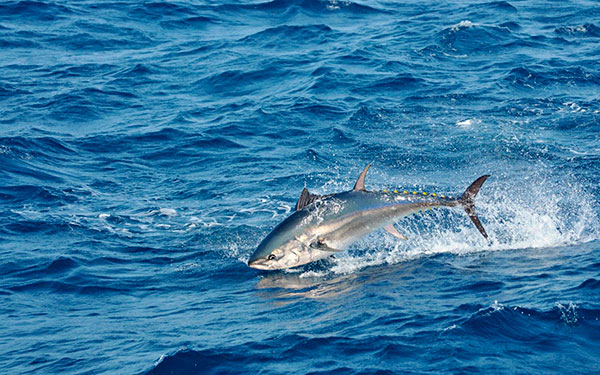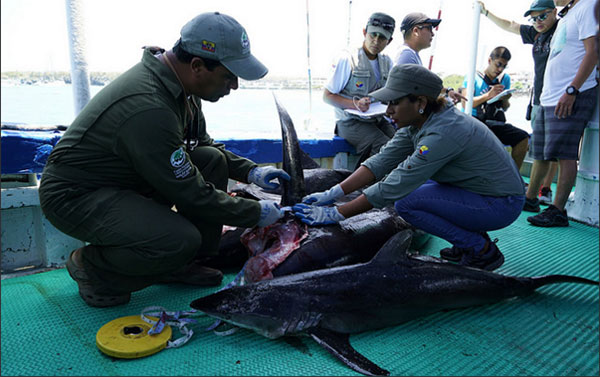Large Pelagics
Monitoring the foraging behavior of large pelagics that inhabit the Galapagos Marine Reserve

The goal of our research is to understand prey assimilation to optimize metabolic processes in large pelagic predators. In Ecuador, very little is known about the role of these predators in the regional food web. Protection and conservation measure the commercial fishing and shark fishing are prohibited in Galapagos, our work is based in samplings of species caught in the Galapagos Marine Reserve, with the aim of creating baseline knowledge about the trophic ecology of sharks and other large fish.
Most large pelagic are top predators, controlling trophic relationships and energy flows within the ecosystems they inhabit. These species are typically considered as generalist consumers, and many have adopted strategies to exploit persistent and profitable resource regions. However, the trophic interactions of these predators are sometimes difficult to determine using traditional methods (diet and telemetry), so the use of alternative techniques such as stable isotopes become an opportunity to infer from another perspective the trophic ecology of these species.

